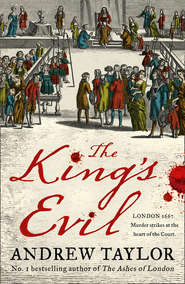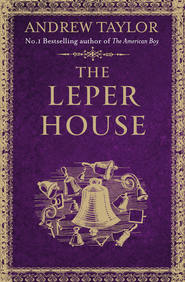По всем вопросам обращайтесь на: info@litportal.ru
(©) 2003-2024.
✖
The World of Gerard Mercator: The Mapmaker Who Revolutionised Geography
Настройки чтения
Размер шрифта
Высота строк
Поля
The World of Gerard Mercator: The Mapmaker Who Revolutionised Geography
Andrew Taylor
The true story of Gerard Mercator, the greatest map-maker of all time, who was condemned to death as a heretic.‘Geographie and Chronologie I may call the Sunne and the Moone, the right eye and the left, of all history.’In ‘The World of Gerard Mercator’, Andrew Taylor chronicles both the story of a great astronomer and mathematician, who was condemned to death as a heretic, and the history of that most fascinating conjunction of science and art: the drawing of maps. Gerard Mercator was born in Flanders in 1512. In addition to creating accurate globes of the earth and the stars, he was the first person to use latitude and longitude for navigation and he created the most-used map of all time: Mercator’s Projection is still the standard view of the world, the one we all envisage when we think of a map of the globe. Simply finding the best solution to the impossible challenge of reproducing the spherical world on a flat sheet of paper was a considerable achievement in itself – something geographers and map-makers had been trying to do for centuries, but Mercator also created the map of the world that would form the basis of the modern age, an image of the continents for the common man.Until Mercator’s Projection, maps offered a pictorial encyclopaedia to an illiterate world, and that world stretched far beyond the knowledge and travels of most mapmakers. It is this evolution of mapmaking from art to science that forms the backdrop to the story of Mercator, from the days of Herodotus and Strabo when fabulous creatures were supposed to inhabit the fringes of the world to the great mappae mundi of Hereford and Ebsdorf. The Greek geographer Pytheas claimed to have visited the far north of Britain to establish the limits of the habitable world; but further north, he claimed that the earth, air and sea coalesced into a jellyfish-like gelatinous suspension that made life impossible.‘The World of Gerard Mercator’ is a brilliantly readable and absolutely fascinating history for the general reader, describing how our worldview came into being.
(#ulink_3bc5ea60-9311-5540-821b-43dde388e202)
Dedication (#ulink_c340aa2e-86a8-5f68-a644-a758890074e9)
FOR SAM, ABI, AND BEC,
and all the years they have to come.
Contents
Cover (#uf241a20c-3d58-5288-a085-8d169f948ff5)
Title Page (#ulink_37148ba8-3428-5eaa-a1f0-3215405bdfd3)
Dedication (#ulink_a29de976-b7c7-5029-be9f-e268e83b8f22)
Introduction (#ulink_49e217b5-723f-5cd9-9e65-b5673939b0b5)
CHAPTER ONE: Pushing Back Shadows (#ulink_8939287c-2266-544b-9fdd-d18d22f38727)
CHAPTER TWO: Forgotten Wisdom (#ulink_4ec6bcb9-fdfa-5e52-b5b5-7470c70644e2)
CHAPTER THREE: A Small Town on the River Scheldt (#ulink_890c0988-5d50-52cd-8b5a-6133709d9f44)
CHAPTER FOUR: Among the Brethren of the Common Life (#ulink_03ae0e4f-9201-5ce2-b6cb-0f6ea1502ffc)
CHAPTER FIVE: At the College of the Castle (#ulink_7f1e0dba-d2dd-55c5-95ab-4a91476c154f)
CHAPTER SIX: Doubts and Dangers (#ulink_df1604df-d12b-59cf-bad1-0cec8779adcd)
CHAPTER SEVEN: Gemma’s Globe (#ulink_c33ba525-c3f2-50ec-94a3-6461bb1fd028)
CHAPTER EIGHT: Craftsman and Cartographer (#litres_trial_promo)
CHAPTER NINE: The Greatest Globe in the World (#litres_trial_promo)
CHAPTER TEN: In the Hands of the Inquisition (#litres_trial_promo)
CHAPTER ELEVEN: Two New Arrivals (#litres_trial_promo)
CHAPTER TWELVE: A New Life (#litres_trial_promo)
CHAPTER THIRTEEN: Our Europe (#litres_trial_promo)
CHAPTER FOURTEEN: A Mysterious Commission (#litres_trial_promo)
CHAPTER FIFTEEN: In the Forests of Lorraine (#litres_trial_promo)
CHAPTER SIXTEEN: Tragedy (#litres_trial_promo)
CHAPTER SEVENTEEN: The Sum of Human Knowledge (#litres_trial_promo)
CHAPTER EIGHTEEN: The World Hung on the Wall: The Projection (#litres_trial_promo)
CHAPTER NINETEEN: Presenting Ptolemy to the World (#litres_trial_promo)
CHAPTER TWENTY: A “Thick Myste of Ignorance” Dispelled (#litres_trial_promo)
CHAPTER TWENTY-ONE: The Geography of the World (#litres_trial_promo)
CHAPTER TWENTY-TWO: The Gathering Dark (#litres_trial_promo)
Afterword (#litres_trial_promo)
Keep Reading (#litres_trial_promo)
Notes (#litres_trial_promo)
Bibliography (#litres_trial_promo)
Index (#litres_trial_promo)
Acknowledgments (#litres_trial_promo)
About the Author (#litres_trial_promo)
Praise (#litres_trial_promo)
Also by the Author (#litres_trial_promo)
Copyright (#litres_trial_promo)
About the Publisher (#litres_trial_promo)
Introduction (#ulink_be06bef6-a70a-5bc7-86a5-81552096fac0)
ONE OF MY earliest memories is of myself as a small boy sitting on a wide window ledge, with my whole world laid out around me. As I turned my head, I took in the comfortable, familiar room behind me, the door into the kitchen, and the wooden sideboard up against the wall, while outside I could see down the yard toward the joiner’s shop, which I knew was filled with sawdust and sharp blades. I could also see the familiar stone steps up to my front door, and another house across the way, where an old man used to sit in the doorway for hours on end, dozing.
That was about as far as my world stretched. I was aware, of course, of other worlds beyond, worlds I had heard about, half understood, or imagined for myself. Scattered among them were a few familiar islands that I had visited and knew fairly well – the stone-flagged floor of the greengrocer’s on the corner, for instance, the high wall on top of which I could walk up to the church, or the little vegetable garden where I used to watch my father as he worked – but for all intents and purposes, they were surrounded by darkness. Good things occasionally came in from those shadows outside – bars of chocolate brought by a kindly aunt, perhaps, or my mother’s shopping – but they were on the whole mysterious and unwelcoming, and if I occasionally peopled them with monsters, that was no more than any child does.
The story of discovery and mapmaking is one of pushing back shadows. The great explorers brought back undreamed-of riches and stories of unknown lands and peoples that were barely believable – the discovery of America, for instance, has been described as the greatest surprise in history – but their claims and discoveries had to be evaluated, laid out on paper, before they could form a coherent picture of the world. Much of that work was carried out by unknown figures, whose maps are lost, forgotten, or remembered only by passing mentions in ancient documents. Some were sailors or traders themselves, trying to prepare reliable charts for their own use and for those who came after them, but many were scholars who never went to sea. A few became famous and produced individual maps that stand out as landmarks in the history of the understanding of the planet. But none, in the last two thousand years, achieved as much as Gerard Mercator in extending the boundaries of what could be comprehended.
Mercator saw himself as a scholar in the ancient tradition, an uomo universale in the mold of the Renaissance – a seeker of truth to whom the whole of knowledge was a single book to be opened. His achievement was nothing less than to revolutionize the study of geography and redraw the map of the world.
Born near Antwerp in 1512, he lived through almost the entire turbulent sixteenth century – an age in which the known world grew year by year as new voyages made new discoveries, but one which also saw the Catholic Church and Europe itself torn apart by Martin Luther and the Protestant reformers. The sacking of cities, the smashing of statues by reformist zealots, and the religious savagery of Church authorities were all part of the temper of the times. This was the age of the Inquisition, whose power, as Mercator was to discover firsthand, extended across the Low Countries: The judicial torture and burning of the unfaithful were commonplace. But it was also an age of intellectual upheaval. Almost halfway through the century, the Polish astronomer Nicolaus Copernicus published his revolutionary theory that the Earth revolved around the Sun – an idea that was confirmed some sixty-five years later by the observations of Galileo Galilei through his telescope. The Church, still clinging to the old idea of the Earth at the center of the universe, could make Galileo recant, but it could not erase the new thinking.
Andrew Taylor
The true story of Gerard Mercator, the greatest map-maker of all time, who was condemned to death as a heretic.‘Geographie and Chronologie I may call the Sunne and the Moone, the right eye and the left, of all history.’In ‘The World of Gerard Mercator’, Andrew Taylor chronicles both the story of a great astronomer and mathematician, who was condemned to death as a heretic, and the history of that most fascinating conjunction of science and art: the drawing of maps. Gerard Mercator was born in Flanders in 1512. In addition to creating accurate globes of the earth and the stars, he was the first person to use latitude and longitude for navigation and he created the most-used map of all time: Mercator’s Projection is still the standard view of the world, the one we all envisage when we think of a map of the globe. Simply finding the best solution to the impossible challenge of reproducing the spherical world on a flat sheet of paper was a considerable achievement in itself – something geographers and map-makers had been trying to do for centuries, but Mercator also created the map of the world that would form the basis of the modern age, an image of the continents for the common man.Until Mercator’s Projection, maps offered a pictorial encyclopaedia to an illiterate world, and that world stretched far beyond the knowledge and travels of most mapmakers. It is this evolution of mapmaking from art to science that forms the backdrop to the story of Mercator, from the days of Herodotus and Strabo when fabulous creatures were supposed to inhabit the fringes of the world to the great mappae mundi of Hereford and Ebsdorf. The Greek geographer Pytheas claimed to have visited the far north of Britain to establish the limits of the habitable world; but further north, he claimed that the earth, air and sea coalesced into a jellyfish-like gelatinous suspension that made life impossible.‘The World of Gerard Mercator’ is a brilliantly readable and absolutely fascinating history for the general reader, describing how our worldview came into being.
(#ulink_3bc5ea60-9311-5540-821b-43dde388e202)
Dedication (#ulink_c340aa2e-86a8-5f68-a644-a758890074e9)
FOR SAM, ABI, AND BEC,
and all the years they have to come.
Contents
Cover (#uf241a20c-3d58-5288-a085-8d169f948ff5)
Title Page (#ulink_37148ba8-3428-5eaa-a1f0-3215405bdfd3)
Dedication (#ulink_a29de976-b7c7-5029-be9f-e268e83b8f22)
Introduction (#ulink_49e217b5-723f-5cd9-9e65-b5673939b0b5)
CHAPTER ONE: Pushing Back Shadows (#ulink_8939287c-2266-544b-9fdd-d18d22f38727)
CHAPTER TWO: Forgotten Wisdom (#ulink_4ec6bcb9-fdfa-5e52-b5b5-7470c70644e2)
CHAPTER THREE: A Small Town on the River Scheldt (#ulink_890c0988-5d50-52cd-8b5a-6133709d9f44)
CHAPTER FOUR: Among the Brethren of the Common Life (#ulink_03ae0e4f-9201-5ce2-b6cb-0f6ea1502ffc)
CHAPTER FIVE: At the College of the Castle (#ulink_7f1e0dba-d2dd-55c5-95ab-4a91476c154f)
CHAPTER SIX: Doubts and Dangers (#ulink_df1604df-d12b-59cf-bad1-0cec8779adcd)
CHAPTER SEVEN: Gemma’s Globe (#ulink_c33ba525-c3f2-50ec-94a3-6461bb1fd028)
CHAPTER EIGHT: Craftsman and Cartographer (#litres_trial_promo)
CHAPTER NINE: The Greatest Globe in the World (#litres_trial_promo)
CHAPTER TEN: In the Hands of the Inquisition (#litres_trial_promo)
CHAPTER ELEVEN: Two New Arrivals (#litres_trial_promo)
CHAPTER TWELVE: A New Life (#litres_trial_promo)
CHAPTER THIRTEEN: Our Europe (#litres_trial_promo)
CHAPTER FOURTEEN: A Mysterious Commission (#litres_trial_promo)
CHAPTER FIFTEEN: In the Forests of Lorraine (#litres_trial_promo)
CHAPTER SIXTEEN: Tragedy (#litres_trial_promo)
CHAPTER SEVENTEEN: The Sum of Human Knowledge (#litres_trial_promo)
CHAPTER EIGHTEEN: The World Hung on the Wall: The Projection (#litres_trial_promo)
CHAPTER NINETEEN: Presenting Ptolemy to the World (#litres_trial_promo)
CHAPTER TWENTY: A “Thick Myste of Ignorance” Dispelled (#litres_trial_promo)
CHAPTER TWENTY-ONE: The Geography of the World (#litres_trial_promo)
CHAPTER TWENTY-TWO: The Gathering Dark (#litres_trial_promo)
Afterword (#litres_trial_promo)
Keep Reading (#litres_trial_promo)
Notes (#litres_trial_promo)
Bibliography (#litres_trial_promo)
Index (#litres_trial_promo)
Acknowledgments (#litres_trial_promo)
About the Author (#litres_trial_promo)
Praise (#litres_trial_promo)
Also by the Author (#litres_trial_promo)
Copyright (#litres_trial_promo)
About the Publisher (#litres_trial_promo)
Introduction (#ulink_be06bef6-a70a-5bc7-86a5-81552096fac0)
ONE OF MY earliest memories is of myself as a small boy sitting on a wide window ledge, with my whole world laid out around me. As I turned my head, I took in the comfortable, familiar room behind me, the door into the kitchen, and the wooden sideboard up against the wall, while outside I could see down the yard toward the joiner’s shop, which I knew was filled with sawdust and sharp blades. I could also see the familiar stone steps up to my front door, and another house across the way, where an old man used to sit in the doorway for hours on end, dozing.
That was about as far as my world stretched. I was aware, of course, of other worlds beyond, worlds I had heard about, half understood, or imagined for myself. Scattered among them were a few familiar islands that I had visited and knew fairly well – the stone-flagged floor of the greengrocer’s on the corner, for instance, the high wall on top of which I could walk up to the church, or the little vegetable garden where I used to watch my father as he worked – but for all intents and purposes, they were surrounded by darkness. Good things occasionally came in from those shadows outside – bars of chocolate brought by a kindly aunt, perhaps, or my mother’s shopping – but they were on the whole mysterious and unwelcoming, and if I occasionally peopled them with monsters, that was no more than any child does.
The story of discovery and mapmaking is one of pushing back shadows. The great explorers brought back undreamed-of riches and stories of unknown lands and peoples that were barely believable – the discovery of America, for instance, has been described as the greatest surprise in history – but their claims and discoveries had to be evaluated, laid out on paper, before they could form a coherent picture of the world. Much of that work was carried out by unknown figures, whose maps are lost, forgotten, or remembered only by passing mentions in ancient documents. Some were sailors or traders themselves, trying to prepare reliable charts for their own use and for those who came after them, but many were scholars who never went to sea. A few became famous and produced individual maps that stand out as landmarks in the history of the understanding of the planet. But none, in the last two thousand years, achieved as much as Gerard Mercator in extending the boundaries of what could be comprehended.
Mercator saw himself as a scholar in the ancient tradition, an uomo universale in the mold of the Renaissance – a seeker of truth to whom the whole of knowledge was a single book to be opened. His achievement was nothing less than to revolutionize the study of geography and redraw the map of the world.
Born near Antwerp in 1512, he lived through almost the entire turbulent sixteenth century – an age in which the known world grew year by year as new voyages made new discoveries, but one which also saw the Catholic Church and Europe itself torn apart by Martin Luther and the Protestant reformers. The sacking of cities, the smashing of statues by reformist zealots, and the religious savagery of Church authorities were all part of the temper of the times. This was the age of the Inquisition, whose power, as Mercator was to discover firsthand, extended across the Low Countries: The judicial torture and burning of the unfaithful were commonplace. But it was also an age of intellectual upheaval. Almost halfway through the century, the Polish astronomer Nicolaus Copernicus published his revolutionary theory that the Earth revolved around the Sun – an idea that was confirmed some sixty-five years later by the observations of Galileo Galilei through his telescope. The Church, still clinging to the old idea of the Earth at the center of the universe, could make Galileo recant, but it could not erase the new thinking.











